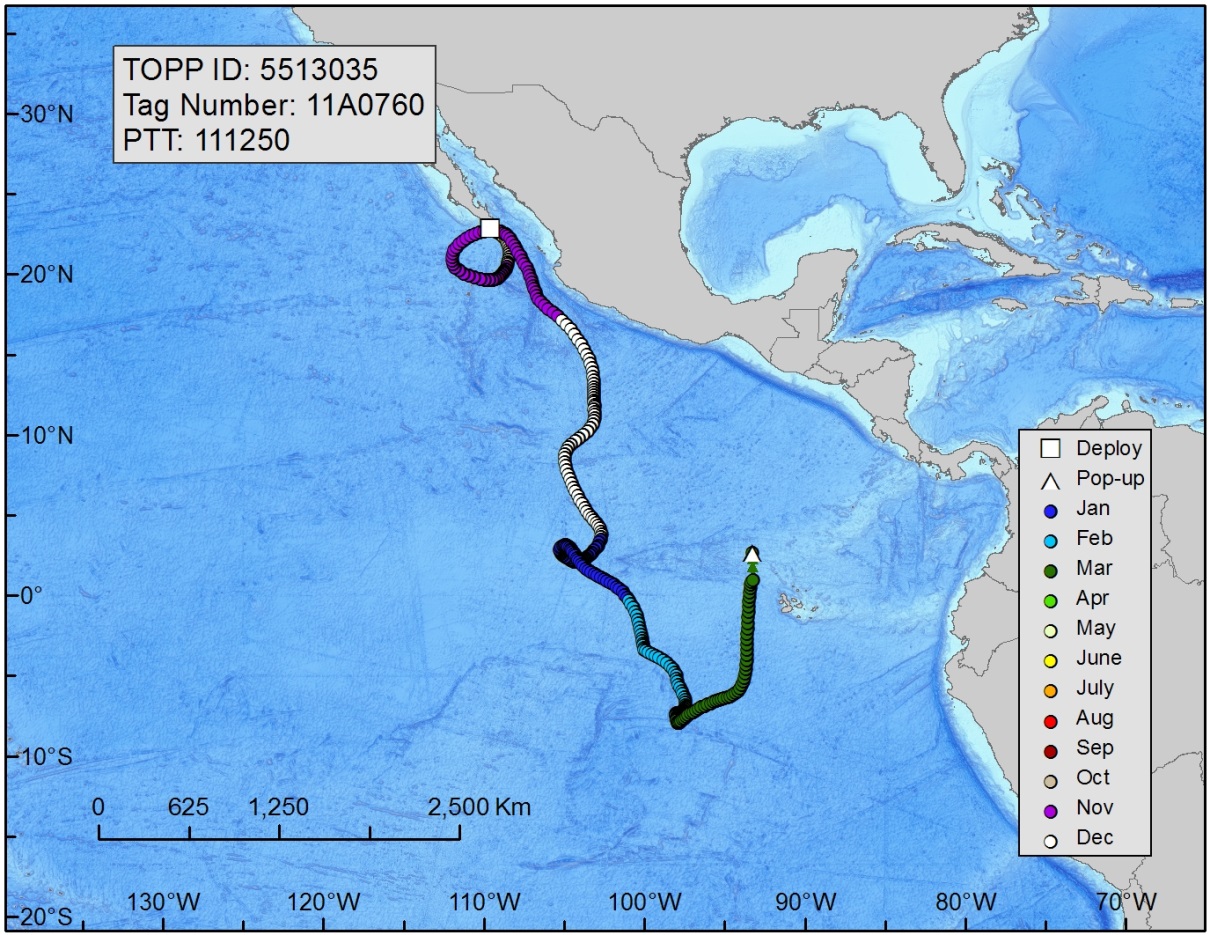Cabo San Lucas, Meixco 2013 Race Update
 SEPTEMBER 2014 -- Last year, the IGFA Great Marlin Race (IGMR) had its first event in Mexico at the Bisbee Los Cabos Offshore Tournament in Cabo san Lucas.The tournament had tags sponsored by teams Sporty Game, Wild Hooker, Wildcatter and Tiger Spirit. Unfortunately, two of the tags failed to report. While the IGMR has an overall reporting rate of nearly 90%, there are reasons why tags may not report. For example, predation events could damage a tag, or a tag may be destroyed when a fish is caught by a commercial vessel.
SEPTEMBER 2014 -- Last year, the IGFA Great Marlin Race (IGMR) had its first event in Mexico at the Bisbee Los Cabos Offshore Tournament in Cabo san Lucas.The tournament had tags sponsored by teams Sporty Game, Wild Hooker, Wildcatter and Tiger Spirit. Unfortunately, two of the tags failed to report. While the IGMR has an overall reporting rate of nearly 90%, there are reasons why tags may not report. For example, predation events could damage a tag, or a tag may be destroyed when a fish is caught by a commercial vessel.
Of the two tags that reported, one unfortunately pulled free of the fish within 48 hours after it was tagged.The other tag that was deployed on a blue marlin on the Sporty Game on October 23, 2013, surfaced and reported on March 28, 2013 and we were blown away by the results. In just under six months, the blue swam a linear distance of 1,544 nautical miles (nm). In addition, the fish appeared to circle back to the Cabo San Lucas, Mexico area during mid-November before swimming south where it crossed the equator twice. The track that was generated from tag revealed that this marlin swam an estimated 4,406 nm in just 156 days before the tag popped off north of the Galapagos Islands.
Like most other blue marlin that have been tagged in the IGMR, this marlin spent the majority (60%) of its time in upper five meters of the water column where the water temperatures were warmest. However, while it preferred warm surface waters, it did make periodic deep dives to depths of nearly 300 meters where water temperatures were as cold as 10-15 degrees Celsius.
Why is any of this important? One of the primary goals of the IGMR is to better understand population connectivity on a global level. Most billfish anglers have wondered at one time or another if the marlin they are catching at location X is the same fish they caught at a later date at location Y. The satellite tag technology used in the IGMR allows us to get relatively long-term movement data that allows us to answer questions such as these. Stay tuned for a full tagging report soon.